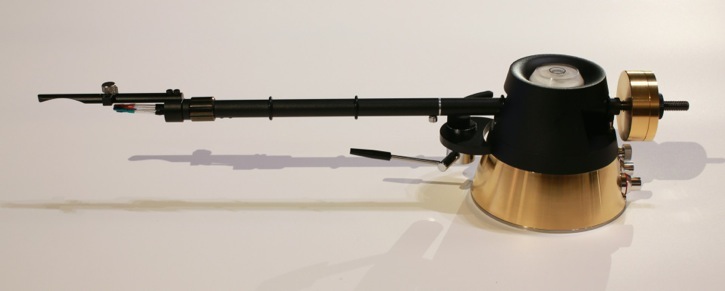It’s not a pod! The tonearm sits.on the same 65lb slate that houses the TT.
- ...
- 595 posts total
What weighs ~2 lbs is the base of the tonearm itself which houses the pivot and the magnetic oil bath. That sits directly on the surface of the slate plinth. To be clearer, I am not using any outboard pod at all. Doggie, what this experience suggests to me, and I am far from drawing a definitive conclusion, is that the standard alignments yield a lot of skating force in order to minimize TAE, and such alignments then require the application of anti-skate as a cure for skating. Like you suggest, either skating force or anti-skate and the way in which it is applied may be more damaging to SQ than TAE. This is also consistent with the experience of some who say they now eschew the use of AS altogether, and prefer the result vs trying to cancel skating with AS. |
@lewm I 'tip my hat to you' for being this adventurous. The descriptions on offer from your early usage are quite interesting, they certainly suggest a perception is in place where the important instrumentation in a recording are now 'lesser constrained' in their presence, in freer space and possibly perceived as more honest/real? . The idea that Three Models of Cart's have also not received any criticism, suggests the impression made can be ubiquitous and extend into further Cart's. I also like the way the thoughts are already onboard about how to further eek the presentation to ones own unique preference by suggesting the combinations of materials that can be used for Wand and Headshell, as for the Headshell, I see these options extending beyond your own suggestions. If 'lesser constrained' is the correct description for your musical encounters, it is this as a description that was the deciding factor for myself to remove from regular usage, Tonearms designed around copied Rega Design. It is quite easy to understand why there will be variety to the methods adopted to be used with AS. The use of AS is to set up a force to be applied to the modulation on the Grooves Side Wall. At some point this force and the mechanical energies being produced as result of the set up, will be detected as having an audible effect. The levels of recorded data within the modulation is to vary across different Vinyl LP's and in some cases different pressings of the same LP, will also be causing different impressions in relation to the chosen AS force. If one were extremely anal or sensitive enough to the effect being detected, to the point they become biased. AS can easily become a setting that one feels will benefit the audible sonic if it undergoes constant alterations. The other extreme, and one that might just prove the better of two evils, would be to remove the effects of AS to the point it is perceived as having almost zero influence on the audible sonic. |
Based on all other writings on the subject of “pod”, I define a pod as a separate base or stand or support structure used for the sole purpose of supporting a tonearm mounted outboard of the plinth, never on the plinth. The truncated conical structure seen in your photo IS an inseparable part of the tonearm housing the pivot, a well filled with magnetic oil, the cueing device, and the RCA jacks with ground lug. It is heavily weighted to the tune of ~2 lbs, probably by a lead slug incorporated into the base. It sits directly on top of the 65 lb slate plinth that houses the Lenco. You could sit the Viv on a true pod outboard of the TT, but I would not. Incidentally, I don’t consider adopting the Viv to have been a courageous act, as it has already received many very favorable reviews with no exceptions that I have found on the internet. This is notwithstanding the negative comments by some who’ve posted on this thread without ever having seen much less heard this tonearm. If there had been a lot of negativity among actual reviewers, I probably wouldn’t have bothered. |
- 595 posts total


